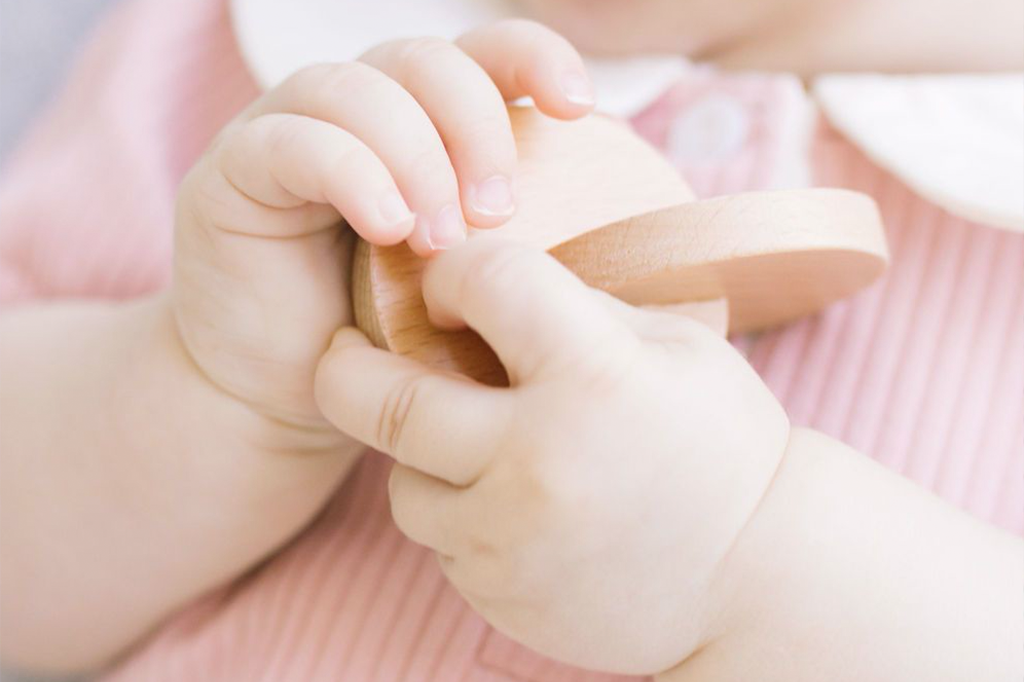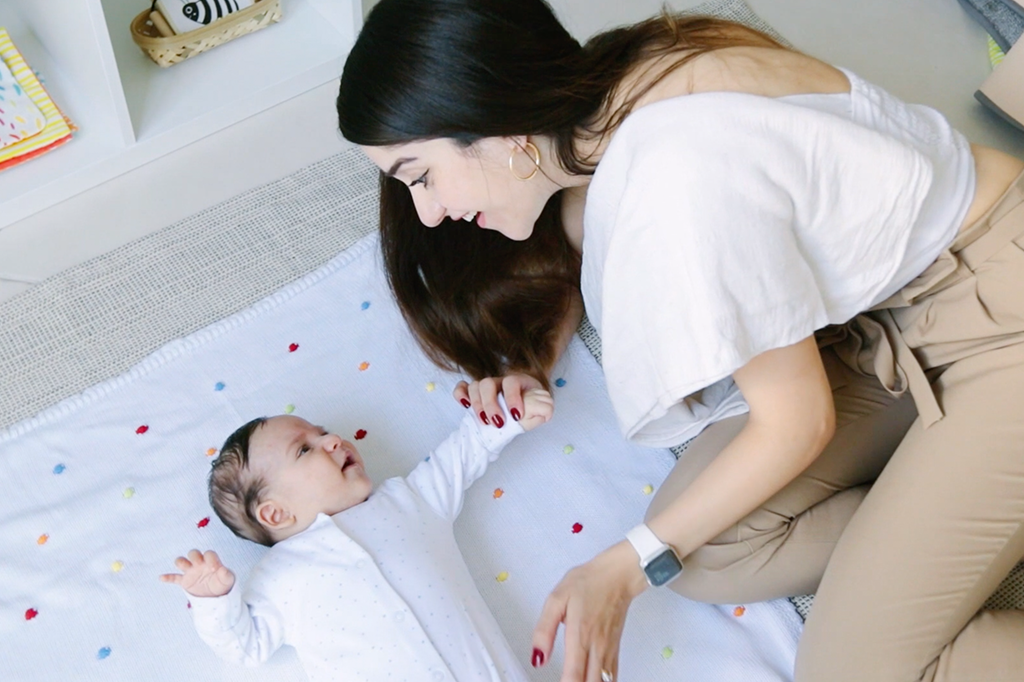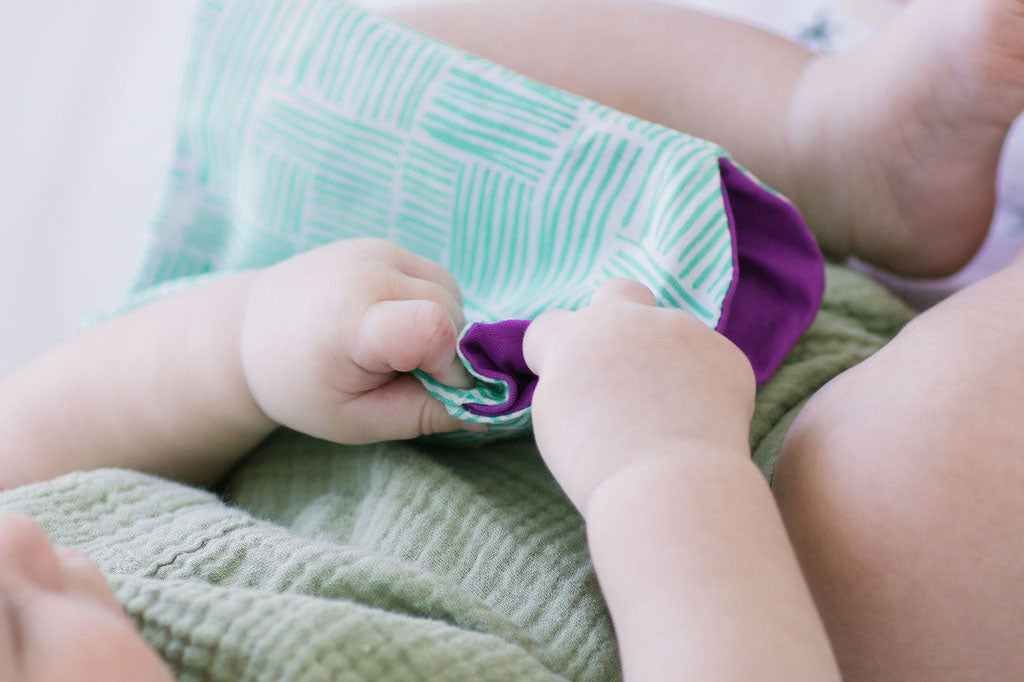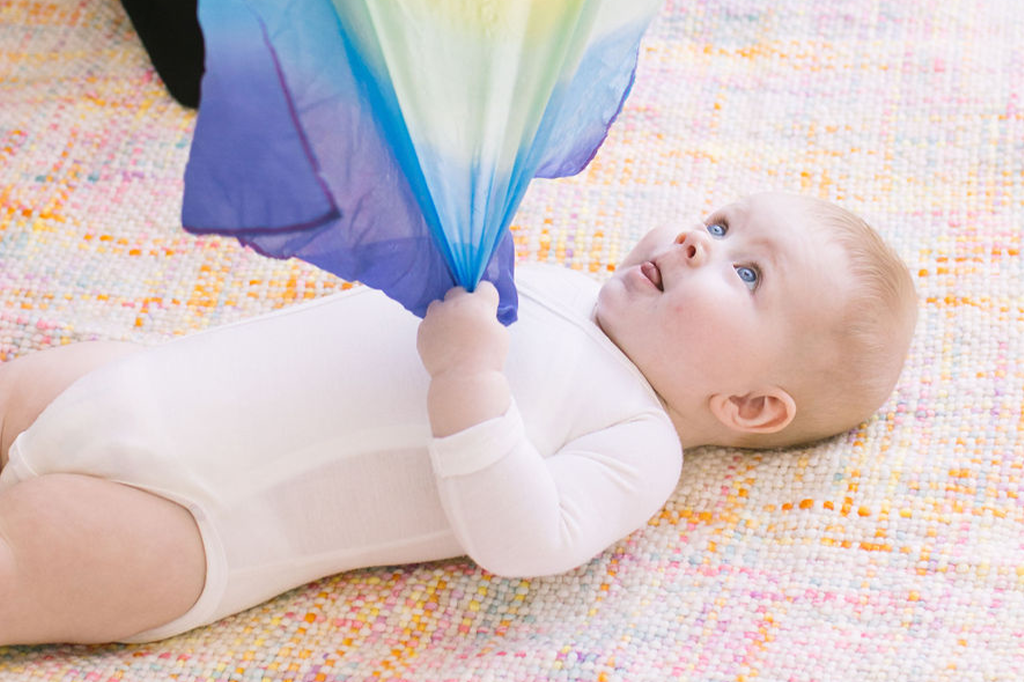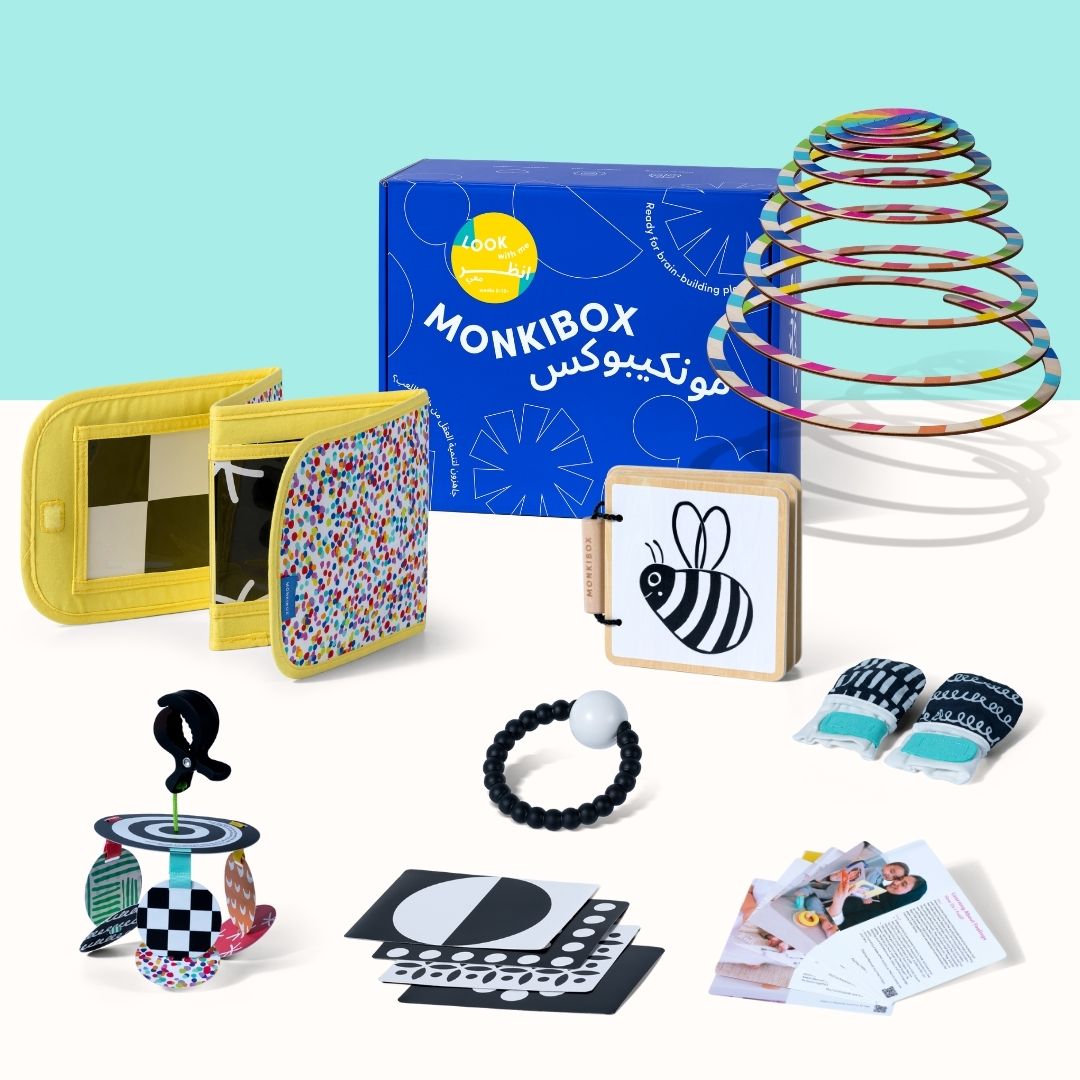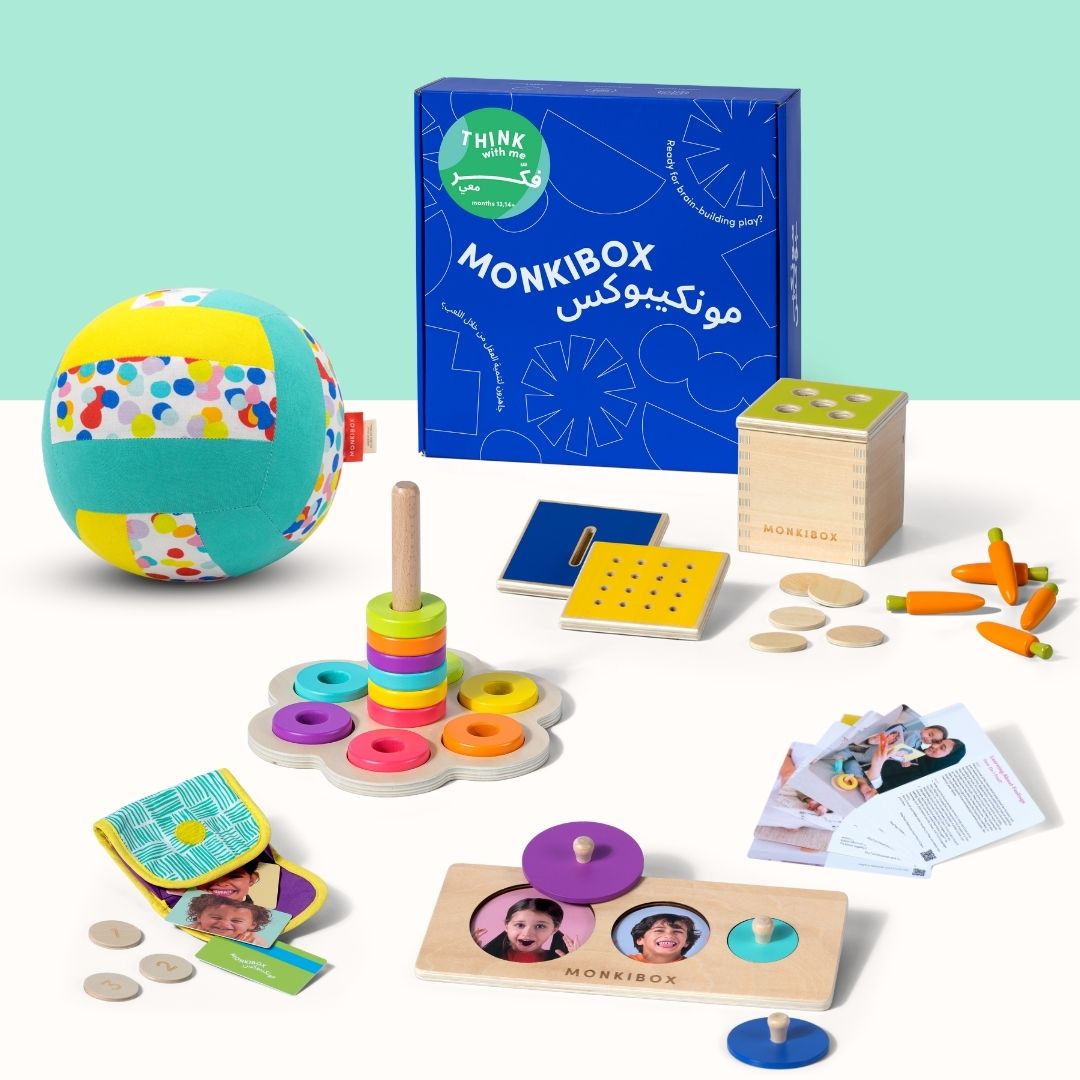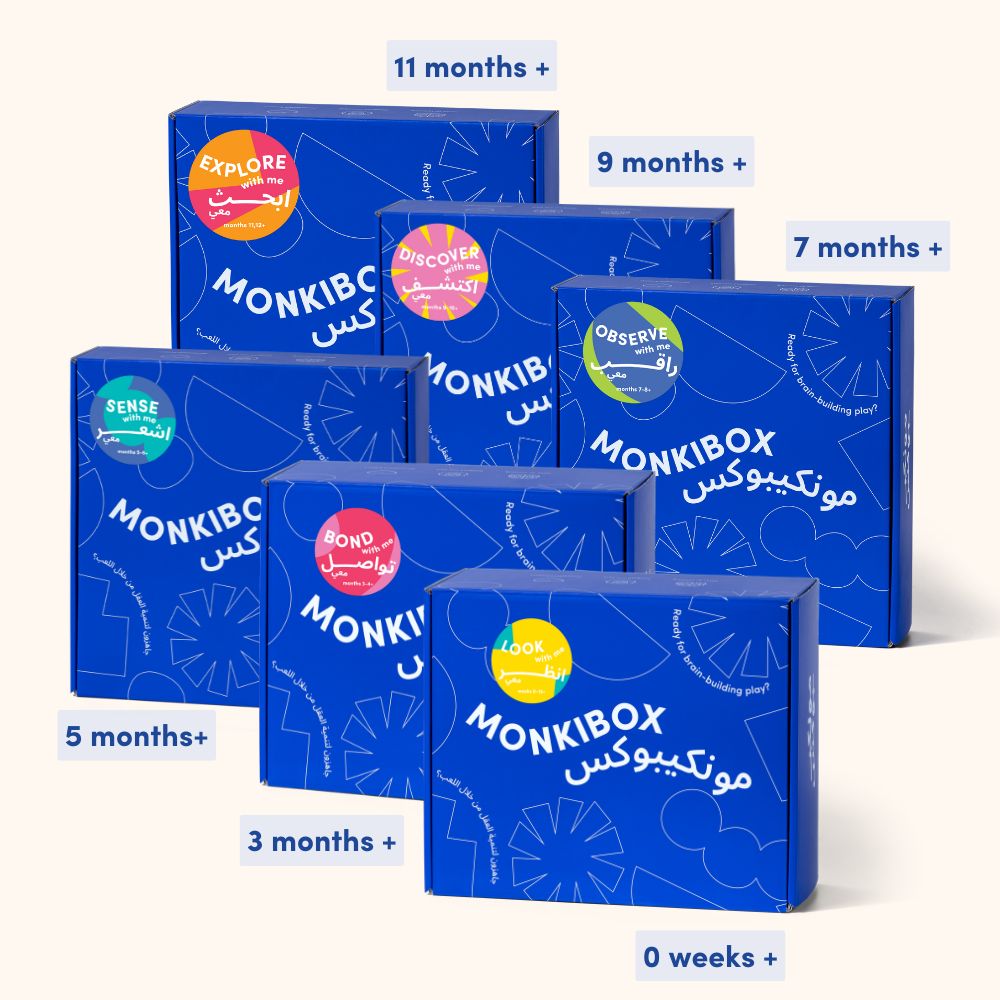Parenting with Me
Week 14: Reaching & Grasping — Why It’s Important and How to Encourage It
Your baby’s small movements lay the groundwork for bigger milestones. Motor development happens step by step, and two of the earliest—and most essential—skills are reaching and grasping, also known as prehension. Though babies are born with a palmar reflex (automatically closing their hand around anything that touches the palm), true voluntary reaching and grasping typically begin around 4 to 5 months. Signs Your Baby Is Ready to Start Reaching and Grasping: - Improved hand-eye coordination: Your baby starts visually tracking objects more intently. - Hands coming together in front of their body. - Batting at toys or hanging objects during play. These signals mean your baby is gearing up for purposeful interaction with the world. Encourage this vital stage with a variety of textures, shapes, and object placements. Tips to Encourage Reaching and Grasping: - Place toys in a semi-circle around your baby—within view, but slightly out of reach. - Offer both one-handed and two-handed toys. - Include stationary objects and ones that roll or move, like balls. - Provide toys with varying textures (e.g., soft balls, rattles, silicone teethers). Use treasure baskets filled with interesting, safe household items (wooden spoons, sponges, scarves, cotton wool, etc.). - Hang toys from a play gym for visual engagement and batting practice. - Allow mouthing—it's how babies explore and learn to hold. Encouraging Voluntary Release (Before 12–18 Months): - Begin by placing your hand under theirs when holding an object. - Offer lightweight, easy-to-release toys. - Model release by gently guiding their hand to drop the toy onto a soft surface. - Praise your baby’s effort every step of the way. Helping Babies with Poor Grip or Grasping Challenges: - Use textured toys to stimulate tactile engagement. - Introduce toys that can be squeezed or have ridges. - Physically guide their hands to grip and release objects. - Encourage activities like splashing water or baby-led feeding to strengthen hand muscles. If Your Baby Isn’t Reaching or Grasping by 5 Months: - Don’t panic! Increase tummy time to build core and upper body strength. - Offer toys just beyond reach to encourage stretching and effort. - If you’re concerned, consult your pediatrician to ensure development is on track. Reaching and grasping are the building blocks of independence and discovery. Start strong with MonkiBox. Our Montessori-inspired toys are thoughtfully designed to nurture every stage of your baby’s development.
5 Steps to Build Your Baby's Brain
To serve and return in a conversation has been proven to help build your baby’s brain. Learn how you can implement it today.
Week 19: An underrated milestone: hand-to-hand transfer
An often overlooked milestone is transferring an object from one hand to another. Read on to learn why this skill is so important.
Fun & Easy Sensory Ideas for Tummy Time
Combine the benefits of tummy time with a sensory experience to keep your baby happy. Here are our favourite ideas.
The Best Way to Talk to Your Baby to Help with Language Development
A one-sided conversation can get boring and uninspired. Learn how to talk to your baby to help their language development.
Your Baby’s Grasping Milestones Explained
Reaching leads to grasping, but this will happen in stages. Here are your baby’s 5 upcoming stages of grasping objects.
How to Use Mirrors to Support Your Baby's Development
Mirrors foster curiosity, help develop social skills and even enhance cognitive development. Here’s how to make a mirror part of playtime.
Reaching & Grasping: Why It’s Important and How to Encourage It
Your baby’s small movements lay the foundation for more challenging ones. Here’s why reaching and grasping are critical for further motor development.
Supporting Your Baby's Development: How to Take Your Baby on a House Tour
Taking your baby on a house tour is a fun learning activity you both will enjoy. Here are some ideas to make it part of your routine.



